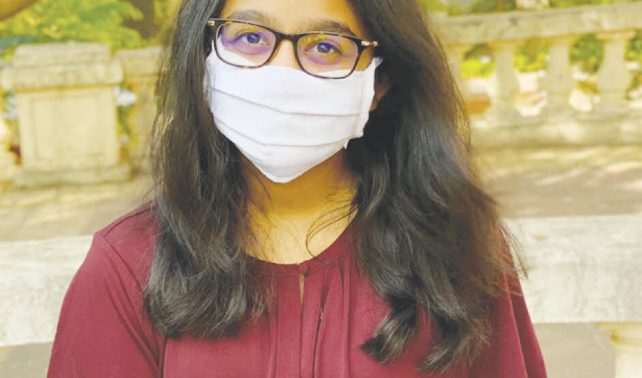
COVID-19 pandemic grips Nation’s attention, but people with rare diseases suffer silently-
CSR funding for research, awareness among medical fraternity key
In the near future, as COVID 19 takes a backseat,one can only hope that these rare diseases too occupy the collective mental bandwidth of the new normal.
Currently, the world is reeling under the pandemic of COVID-19. While the current official count of COVID-19 infected individuals in India is over fourteen lakh, it is no exaggeration to say that it has impacted literally every citizen of the country.
Finally, the lack of knowledge among general physicians and healthcare employees about these diseases has to be corrected. As a part of our ongoing research project, we spoke to about three or four patients who suffer from these diseases, and the story has been identical across all the cases.They were diagnosed with these diseases only after multiple consultations with doctors. It is clear that these initial mis-diagnoses add up, further exacerbating the cost to the patients. Therefore, these diseases being a part of the medical being a part of the medical school curriculum, massive education campaigns for doctors and healthcare professionals, etc. should help significantly in terms of helping spread awareness.In sum, the time has come to take these rare diseases seriously. The Indian judiciary seems to be loud and clear in its view that it is governmental responsibility too. The society, at large too, cannot absolve itself of the responsibility of providing relief to the patients. In the near future, as COVID-19 takes a backseat, one can only hope that these rare diseases too occupy the collective mental bandwidth of the new normal.
KHADI KAVACH, a hand spun & hand woven cloth face mask is a manifestation of the ‘Economic Problem’ turned into an innovative idea to help the nation fight COVID-19.

Converting a crisis to an opportunity and to an effective national service
I’m Chinmayee Kusnur, a student at Simon Fraser University in Canada, currently living back here in Mumbai.I had to return home in March, just halfway through the semester because of the outbreak. Back to the “Economic Problem”, the idea came from the shortage of masks during my journey back home from Vancouver.My concerns were validated as an opportunity by the visualisation of the under-privileged being unable to procure masks for themselves and their loved ones then for sure the unprivileged because of the shortage, despite the announcement by the Government of India making masks as accessories to be worn mandatorily at all the times when outside in public places.The reason behind choosing Khadi has multiple dimensions. Firstly, the obvious: the material: is durable, scalable and washable, aligns with sustainability and reusability, and allows air to permeate through. The second, largely overlooked aspect of it is considering that the cloth is hand spun & hand woven, the production itself creates a lot of scope in terms of employment generation, and aids self-help groups. Emphasising on how this can happen, these Khadi masks have been crafted in my native Dharwad, situated in North Karnataka.
I’m grateful to my cousin Nachiket Jamadar for handling the logistics and making them available. Cloth based masks are ideal in balanced conditions, taking decent care of personal hygiene, while also scoring well on other aspects such as reusability and “low footprint”. India has a population of over 130 crores, and a large chunk of the same cannot really afford even the most basic necessities. Considering this, and the outbreak, it is almost rational to create something that solves both the issues. We need to democratise KHADI KAVACH for everyone; for those below the poverty line, and help them fulfill their right to live. What if that something could also make us “Atma Nirbhar”? As our Honourable Prime Minister, Mr. Narendra Modi praised during his speech, Khadi is truly ours, and we need to take it to the nation. Back to our nation. We have a long way to go, both in terms of the adoption of Khadi, and in our fight with the pandemic.
We began by carrying out a crowd-funding campaign through “Ketto”, and were able to create a pool of `100,000/-, and since then have distributed such masks to the Indian Army, Mumbai Police, other security personnels, and to the under-privileged. But this is just the beginning, and we are not stopping. Currently, the proceeds collected by selling these masks are used to donate more to those who need them. Having begun and come so far, I would like to express my deepest gratitude to my Mother, without whom this initiative wouldn’t have been possible. I’m also thankful to my Father and his firm – Aquakraft Projects Pvt Ltd, for enabling and boosting this project. I urge one and all to adopt Khadi and to know more & buy please visit www.khadis.in

Why CSR funding is essential for Environment and Climate Change research ?
” Outcome of the webinar organised by CSF with Environment experts and HR Professionals on Corporate sector contribution in supporting Environment and Climate Change adaptation research that has an impact on consumerism in the light of Covid 19″
Climate Change challenges: Globally climate change presents the single biggest threat to sustainable development everywhere and its widespread, unprecedented impacts disproportionately burden the poorest and most vulnerable. Climate change is one of the most critical issues that emerges in the debate on sustainability.Some of the prominent natural factors are gradual drift of landmass, volcanic eruptions, direction change of ocean currents and the earth’s tilt. But the concern is the way the change has been happening for over last hundred years. Along with other interventions to combat this challenge, voluntary business initiatives, in the form of corporate social responsibility practices, can play a key role in promoting sustainable development, whose effectiveness depends on the responsible involvement of actors operating in the political, economic and societal sphere.
Indian scenario: In India, Climate change is expected to have major impacts on lives, shorelines, health and economy. Global warming alters the natural phenomenon into recurring natural hazards ranging from intensified frequent cyclonic storms, flash floods, landslides, earthquakes and as well as increasing zoonotic diseases. Moreover, the slow disasters such as frequent droughts are also going to cause severe impacts in the near future. Rising sea levels have immediate effects on the coastal areas, sinking small islands and threatening food security etc. Most of all this situation leads to disruption in the national economy, affecting vulnerable communities, costing people with uncertainties every other day.
Impact of Carbon Emission and Global Warming: It is evident that the well-developed countries are in one hand responsible for the increase in atmospheric CO2, one of the major green house gases in the past 200 years. On the other hand, they are also one of the major contributors for combatting climate change across the nations. It had profusely speeded up because of man’s activities. It is the result of emissions of carbon dioxide (CO2) and other greenhouse gases (GHGs) from anthropogenic activities like large-scale use of fossil fuel, deforestation and rapid industrial growth. All these factors can be ascribed to growing consumerism and population explosion. The impact of climate change and global warming has already been felt by mankind. If it goes unabatedly, in the coming years we will reach the irremediable ‘tipping point’, exposing the globe to unmitigated catastrophe. Almost all aspects of our lives will be affected more severely due to this phenomenon. In this scenario, developing countries are progressing towards reducing the burden by shouldering the combat by balancing their developmental activities in achieving reduced carbon emissions.
Rationale for Research funding support on Environment and Climate Change: In this article we try to capture the growing concerns faced by India with regard to climate change. So far, no conclusive research is conducted on the impacts of climate change on India. The processes with respect to disaster management are more or less the upgraded crisis management of government machinery. Appropriate research has to be initiated towards environment and climate change. Further, the measures proposed in the legislations towards combatting national disasters should not only be restricted to government machinery. It is the responsibility of every citizen to lend their support for a successful disaster mitigation and adaptation process. For the adaptation process, a deep understanding on the issues of existing poverty, politics and economy is required.
However, both the aforementioned points were left to grass root level organisations and NGOs to handle with. Numerous new schemes are developed by the National governments, though the funds are restricted to government machinery itself. In the present conditions the industrialists stepped up their responsibilities through Corporate Social Responsibility projects. Such projects are aimed at fulfilling the duties under the regulations and legislative acts enacted. It is reported that in India 64% of the companies are eligible for funding CSR projects and 68% of the prescribed CSR amount accounts to approximately INR52,000 crore. Those funds have been designated to various developmental activities under various segments for the benefits of vulnerable communities. Education and healthcare are given more preference than other segments.
Evidence based past research projects on biological hazards due to climate change: There are major ground breaking innovations and initiatives has been made to combat climate change. There is also growing demand for such initiatives and resources towards indigenous research capacity. Nevertheless, the outbreak of epidemics and pandemics are also become a concern in the present scenario. Historical evidences indicate an approximate outbreak of 4-5 epidemic or pandemic disease either affecting lives or agricultural crops. Most of the diseases are identified as zoonotic which spreads from animal species to humans. Humans have become the final reservoir as they stand tall the top carnivores in the food chain. For instance, humanity in the last century had witnessed American Polio epidemic (1916), Spanish flu (1918-1920), Asian Flu (1957-1958), AIDS (1981-present day), SARS (2003), H1N1 Swine flu (2009-10), West African Ebola (2014-2016), Zika virus (2015-present day), Novel Corona Virus (2019-present day). This magnifies the situation of a disease outbreak converted into a threat to global security. Mostly these diseases have their origin in remote areas soon after became pandemic owing to the increasing global population trend and transportation facilities.
Scientific community observed and predicted the links between infectious disease and climate change. Research involved in understanding the recent past associations between climate change and disease occurrence, early indicators of already emerging infectious disease impacts of long-term climate variability and finally with the above evidence involved in creating predictive models to estimate the future impacts under projected climate scenarios.
For example, Malarial epidemic in the early last century is attributed to the excessive monsoon rainfall and high humidity which enhanced the breeding and survival of mosquito larvae. Recent findings support the conclusion as the malarial epidemic increases around five-fold in the years after an El nino event.